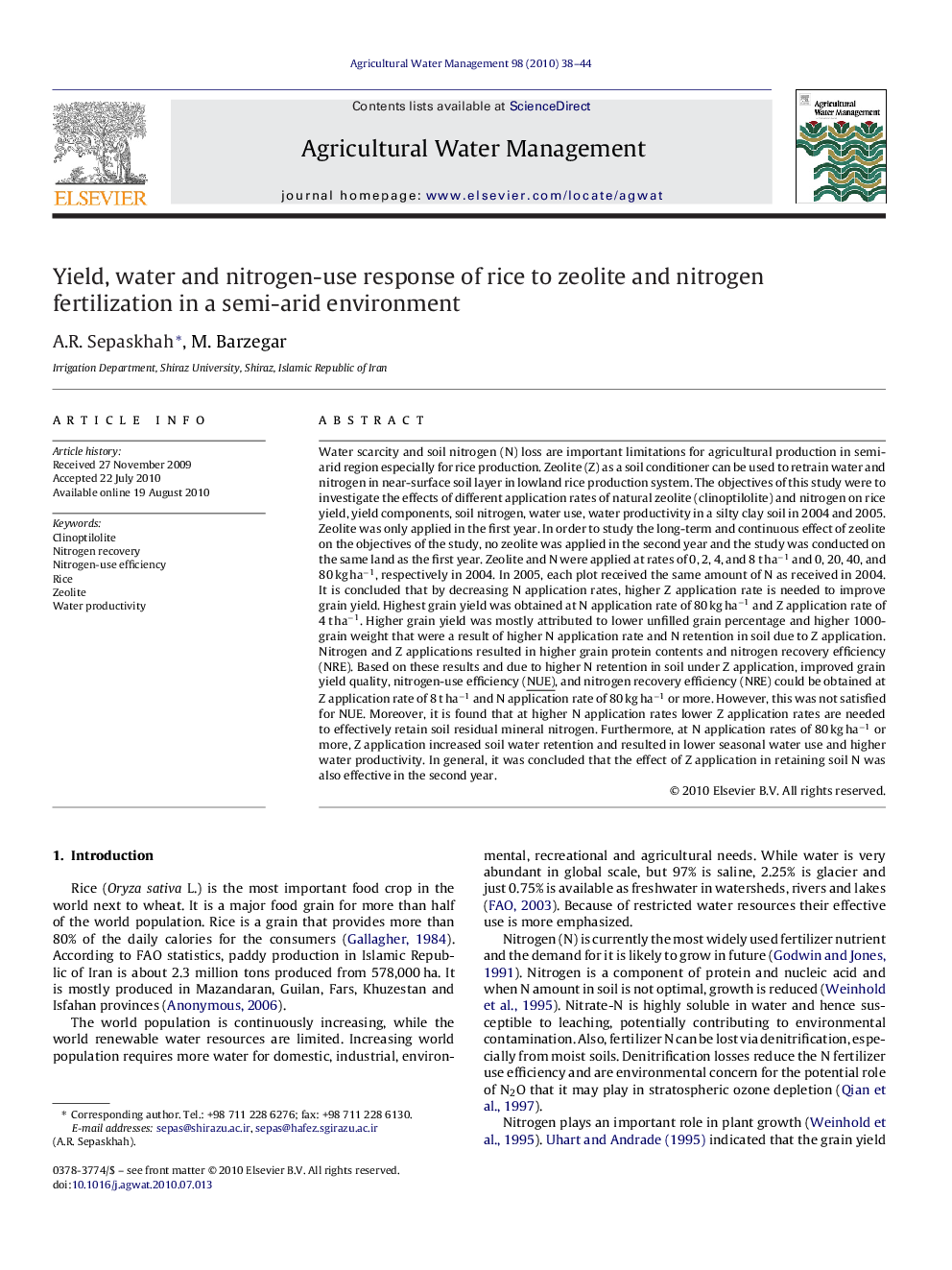| کد مقاله | کد نشریه | سال انتشار | مقاله انگلیسی | نسخه تمام متن |
|---|---|---|---|---|
| 4479634 | 1316452 | 2010 | 7 صفحه PDF | دانلود رایگان |

Water scarcity and soil nitrogen (N) loss are important limitations for agricultural production in semi-arid region especially for rice production. Zeolite (Z) as a soil conditioner can be used to retrain water and nitrogen in near-surface soil layer in lowland rice production system. The objectives of this study were to investigate the effects of different application rates of natural zeolite (clinoptilolite) and nitrogen on rice yield, yield components, soil nitrogen, water use, water productivity in a silty clay soil in 2004 and 2005. Zeolite was only applied in the first year. In order to study the long-term and continuous effect of zeolite on the objectives of the study, no zeolite was applied in the second year and the study was conducted on the same land as the first year. Zeolite and N were applied at rates of 0, 2, 4, and 8 t ha−1 and 0, 20, 40, and 80 kg ha−1, respectively in 2004. In 2005, each plot received the same amount of N as received in 2004. It is concluded that by decreasing N application rates, higher Z application rate is needed to improve grain yield. Highest grain yield was obtained at N application rate of 80 kg ha−1 and Z application rate of 4 t ha−1. Higher grain yield was mostly attributed to lower unfilled grain percentage and higher 1000-grain weight that were a result of higher N application rate and N retention in soil due to Z application. Nitrogen and Z applications resulted in higher grain protein contents and nitrogen recovery efficiency (NRE). Based on these results and due to higher N retention in soil under Z application, improved grain yield quality, nitrogen-use efficiency (NUE), and nitrogen recovery efficiency (NRE) could be obtained at Z application rate of 8 t ha−1 and N application rate of 80 kg ha−1 or more. However, this was not satisfied for NUE. Moreover, it is found that at higher N application rates lower Z application rates are needed to effectively retain soil residual mineral nitrogen. Furthermore, at N application rates of 80 kg ha−1 or more, Z application increased soil water retention and resulted in lower seasonal water use and higher water productivity. In general, it was concluded that the effect of Z application in retaining soil N was also effective in the second year.
Journal: Agricultural Water Management - Volume 98, Issue 1, 1 December 2010, Pages 38–44